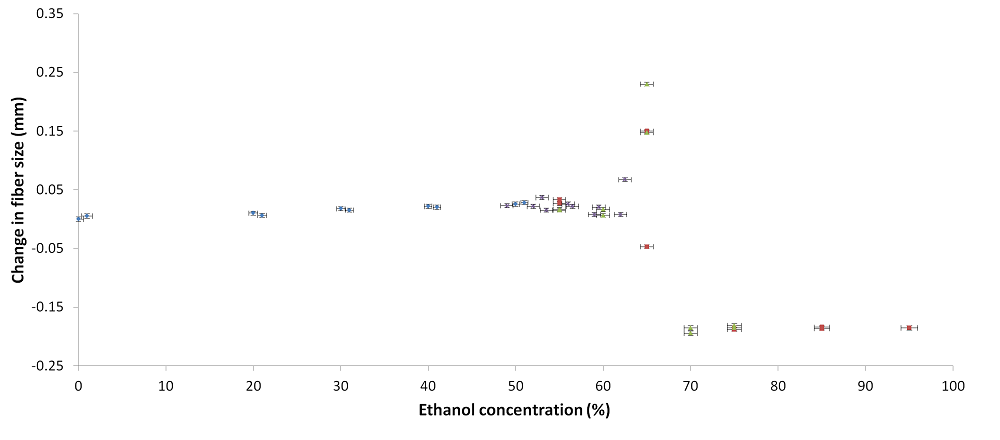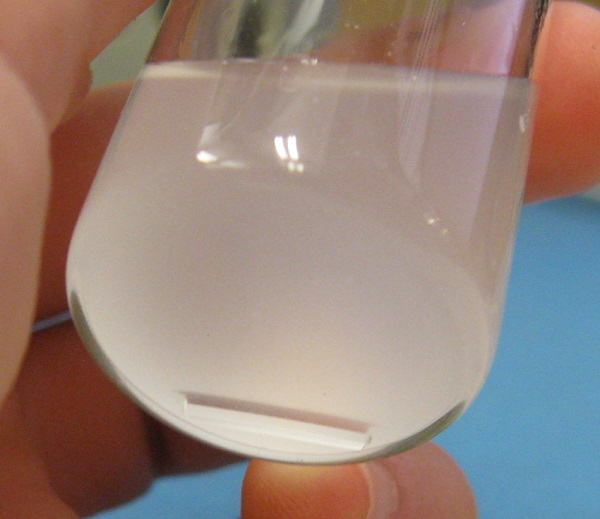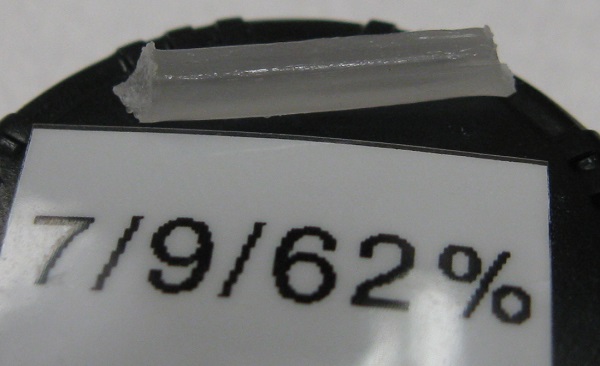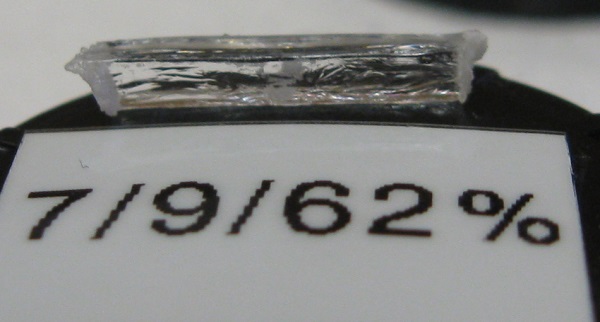Difference between revisions of "Heated Alcohol Tests"
Jump to navigation
Jump to search


(Created page with 'When the light guides were placed in heated ethanol concentrations, damage occurred to the fibers' cladding. Because it was significant damage, many concentrations were tested. …') |
m |
||
| Line 12: | Line 12: | ||
[[File:Alcohol_Test_6_Solutions.jpg|frame|center|alt=Solutions from Alcohol Test 6 (heated)|Here you can see how the ethanol concentrations become increasingly cloudy as the ethanol concentration increases. The vials' concentrations are as follows: 55%, 55%, 60%, 60%, 65%, 65%, 70%, 70%, 75%, 75%. We believe that the vials get cloudier because of the increasing damage to the fibers cladding.]] | [[File:Alcohol_Test_6_Solutions.jpg|frame|center|alt=Solutions from Alcohol Test 6 (heated)|Here you can see how the ethanol concentrations become increasingly cloudy as the ethanol concentration increases. The vials' concentrations are as follows: 55%, 55%, 60%, 60%, 65%, 65%, 70%, 70%, 75%, 75%. We believe that the vials get cloudier because of the increasing damage to the fibers cladding.]] | ||
| − | [[File:Alcohol_Test_7_Fiber9_Wet.jpg|frame| | + | [[File:Alcohol_Test_7_Fiber9_Wet.jpg|frame|center|alt=Fiber 9 wet from Test 7 (heated)| This is a fiber which rested in 62% ethanol. The picture was taken immediately after being removed from the solution. As you can see, the fiber looks evenly cloudy and looks swollen.]] |
| − | [[File:Alcohol_Test_7_Fiber9_Dry.jpg|frame| | + | [[File:Alcohol_Test_7_Fiber9_Dry.jpg|frame|center|alt=Fiber 9 dry from Test 7 (heated)| This is the same fiber as photographed above, except it has now had 30 minutes to dry at room temperature. It is no longer as cloudy as before, and the fiber's cladding is now wrinkled and damaged.]] |
Revision as of 19:18, 10 July 2013
When the light guides were placed in heated ethanol concentrations, damage occurred to the fibers' cladding. Because it was significant damage, many concentrations were tested.
The procedure for the heated alcohol tests can be found here.

Above is the plot of all of the data collected from the heated alcohol tests. The different colors represent the individual tests. It appears that the fibers swell slightly in size until around 65%, where their widths greatly increase. However, after the 65% mark, the fibers have a negative change in width which it is when it is believed that the entire cladding is removed. This information is very important when considering what temperature and concentrations of ethanol can be used to clean the fibers.

Here you can see how the ethanol concentrations become increasingly cloudy as the ethanol concentration increases. The vials' concentrations are as follows: 55%, 55%, 60%, 60%, 65%, 65%, 70%, 70%, 75%, 75%. We believe that the vials get cloudier because of the increasing damage to the fibers cladding.



